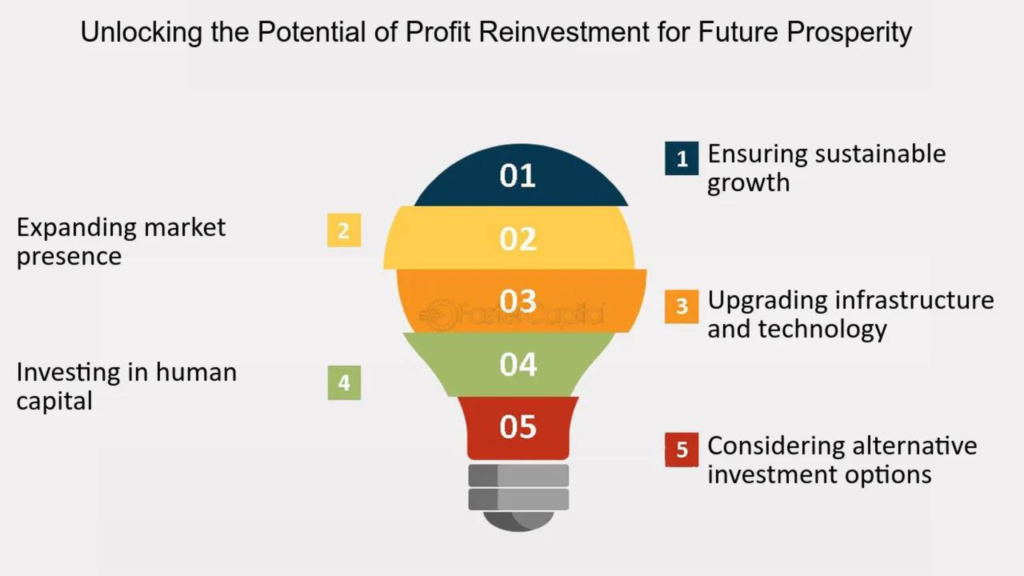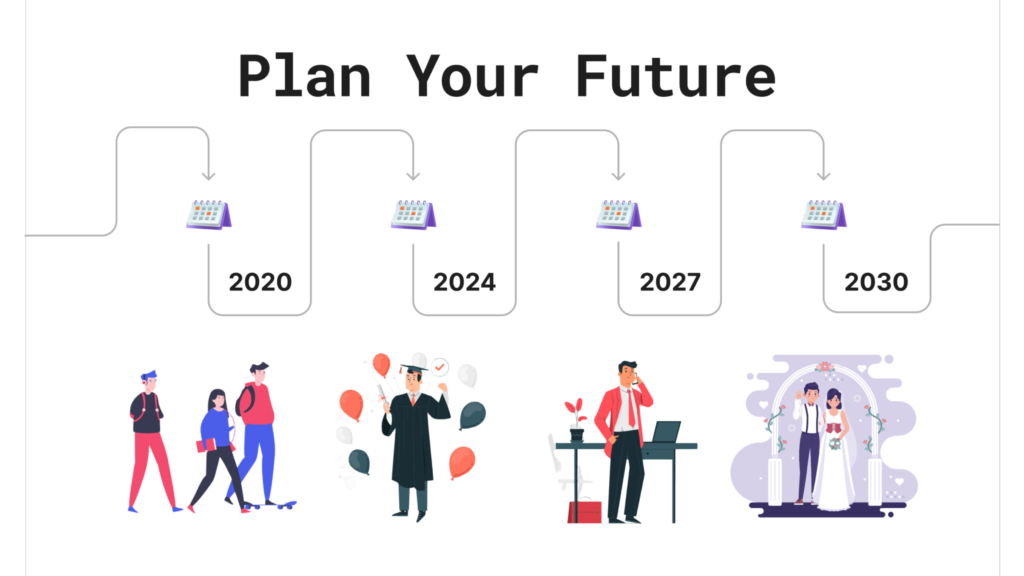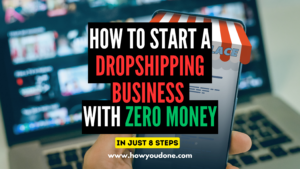Have you ever dreamed of starting your own service based business, but felt discouraged by the lack of funds, resources, or experience? If so, you are not alone. Many aspiring entrepreneurs face the same challenges and give up on their dreams before they even begin.
But what if I told you that you can start a successful business with zero investment? Yes, you read that right. Zero. Nada. Zilch.
Additionally, Sounds too good to be true, right? Well, it’s not. In fact, there are countless examples of people who have built thriving service-based businesses from scratch, without spending a dime.
Furthermore, A service-based business is a type of business that provides intangible value to customers, such as consulting, coaching, writing, designing, teaching, etc. Unlike product-based businesses, service-based businesses do not require inventory, manufacturing, or shipping. This means that they have lower overhead costs and can be started with minimal resources.
Some of the benefits of starting a service-based business are:
– You can leverage your existing skills and passion to create value for others.
– Moreover, you can work from anywhere, anytime, and with anyone you want.
– You can set your own rates and terms, and have more control over your income and expenses.
– Likewise, you can build long-term relationships with your clients and establish yourself as an authority in your niche.
– You can scale your business as you grow, and diversify your income streams.
Starting a service-based business with zero investment is not only possible, but also highly rewarding. However, it does require a lot of hard work, dedication, and creativity. You need to have a clear vision, a solid strategy, and a strong mindset to overcome the challenges and achieve your goals.
In this guide, I will show you how to start a service-based business with zero investment, step by step. I will cover the following topics:
– How to discover your niche and value proposition
– Furthermore, How to build your online brand and audience
– How to market and grow your business without spending
– Although, How to scale your business with minimal investment
– How to find inspiration and support along the way
By the end of this guide, you will have a clear roadmap for success, and the confidence to take action. Ready to get started? Let’s dive in!
Discovering Your Niche and Value

The first step to starting a service-based business with zero investment is to discover your niche and value proposition. Your niche is the specific market segment that you serve, and your value proposition is the unique benefit that you offer to your customers.
Finding your niche and value proposition is crucial for your success, as it will help you:
– Stand out from the competition and attract your ideal clients
– Focus your efforts and resources on the most profitable opportunities
– Deliver consistent and high-quality results that exceed expectations
– Build trust and loyalty with your customers and increase retention and referrals
To discover your niche and value proposition, you need to do two things: conduct a skills and passion inventory, and perform market research.
Skills and Passion Inventory
A skills and passion inventory is a simple exercise that helps you identify your talents and interests. To do this, you need to ask yourself the following questions:
– What are the skills that you have acquired through your education, work, or hobbies?
– What are the skills that you enjoy using and want to improve?
– What are the skills that you are good at and can deliver value with?
– What are the passions that drive you and make you happy?
– What are the passions that you want to share with others and make a difference with?
Write down your answers in a list, and rank them according to your level of proficiency, enjoyment, and impact. Then, look for the common themes and patterns that emerge. These are the clues that will help you find your niche and value proposition.
For example, let’s say that you are a graphic designer who loves creating logos, flyers, and posters. You have a knack for visual communication and branding, and you enjoy helping small businesses and nonprofits with their design needs. You also have a passion for environmental issues and sustainability, and you want to use your skills to raise awareness and inspire action.
Based on this, you could narrow down your niche to eco-friendly graphic design, and your value proposition could be something like:
“I help eco-conscious businesses and organizations create stunning and impactful designs that reflect their values and mission.”
Market Research

Market research is the process of gathering and analyzing information about your potential customers, competitors, and industry trends. It helps you validate your niche and value proposition, and understand the needs, preferences, and challenges of your target market.
To conduct market research, you need to use both primary and secondary sources of data. Primary sources are the ones that you collect directly from your potential customers, such as surveys, interviews, or feedback forms. Secondary sources are the ones that you obtain from existing sources, such as websites, blogs, social media, forums, or reports.
Some of the questions that you need to answer through market research are:
– Who are your ideal customers? What are their demographics, psychographics, and behaviors?
– What are their goals, pain points, and desires? How can you help them solve their problems or achieve their outcomes?
– What are their expectations, preferences, and objections? How can you meet or exceed their expectations, cater to their preferences, and overcome their objections?
– Who are your competitors? What are their strengths, weaknesses, opportunities, and threats? How can you differentiate yourself from them and create a competitive advantage?
– What are the industry trends and best practices? How can you stay updated and relevant in your niche?
Use a variety of tools and methods to collect and analyse your data, such as Google Trends, Keyword Planner, BuzzSumo, Quora, Reddit, Facebook Groups, SurveyMonkey, etc. Then, synthesize your findings and draw actionable insights that will help you refine your niche and value proposition.
For example, based on your market research, you might discover that your ideal customers are small businesses and nonprofits that operate in the green sector, such as organic food, renewable energy, or eco-tourism. You might also find out that they struggle with finding affordable and reliable graphic designers who understand their niche and values. You might also learn that they prefer simple, minimalist, and nature-inspired designs that convey their message and brand identity.
Based on this, you could further refine your niche and value proposition to something like:
“I help green businesses and non-profits create simple, minimalist, and nature-inspired designs that convey their message and brand identity, at an affordable and reliable rate.”
Building Your Online Brand and Audience

The next step to starting a service-based business with zero investment is to build your online brand and audience. Your online brand is the image and reputation that you create and maintain on the internet, and your audience is the group of people who are interested in and engaged with your brand.
Building your online brand and audience is essential for your success, as it will help you:
– Establish your credibility and authority in your niche
– Showcase your portfolio and testimonials to demonstrate your value and quality
– Generate leads and referrals to grow your customer base
– Build trust and rapport with your prospects and customers to increase conversions and retention
To build your online brand and audience, you need to do three things: create a free website, implement a social media strategy, and leverage networking and partnerships.
Free Website Creation

A website is the online home of your business, where you can showcase your value proposition, portfolio, testimonials, and contact information. It is also the place where you can capture leads, nurture relationships, and convert prospects into customers.
Creating a website does not have to be expensive or complicated. There are many platforms that allow you to build a free website, such as WordPress, Wix, Squarespace, Weebly, etc. These platforms offer a variety of templates, features, and integrations that you can customize to suit your needs and preferences.
Some of the tips for creating a free website are:
– Choose a platform that matches your skill level and goals. For example, WordPress is more flexible and powerful, but also more complex and requires more maintenance. Wix is more user-friendly and intuitive, but also more limited and less scalable.
– Choose a domain name that is relevant, memorable, and easy to spell and pronounce. For example, ecofriendlygraphicdesign.com is better than xyz123design.com.
– Choose a hosting plan that is reliable, secure, and fast. Some platforms offer free hosting, but they may have limitations on bandwidth, storage, or functionality. You may want to upgrade to a paid plan if you need more features or performance.
– Choose a theme or template that is responsive, clean, and professional. Make sure that your website looks good and works well on different devices and browsers.
– Choose a color scheme, font, and logo that reflect your brand identity and personality. Use consistent and harmonious elements throughout your website to create a cohesive and appealing look.
Essential Website Elements
Once you have created your website, you need to fill it with essential elements that will communicate your value and persuade your visitors to take action. Some of the essential website elements are:
– Clear value proposition: A value proposition is a concise and compelling statement that summarizes what you do, who you serve, and how you help. It should be placed prominently on your homepage, and answer the question: “Why should I choose you?”
– Portfolio: A portfolio is a collection of your previous work samples that demonstrate your skills and quality. It should be displayed on a separate page, and include relevant and impressive examples of your designs. You can also add a brief description of each project, highlighting the client’s goals, challenges, and results.
– Testimonials: Testimonials are positive feedback from your previous or current clients that validate your value and quality. They should be displayed on a separate page, and include the client’s name, photo, and website (if applicable). You can also add a short quote or a video testimonial that highlights the client’s experience and satisfaction.
– Contact information: Contact information is the way for your visitors to get in touch with you and inquire about your services. It should be placed on a separate page, and include your email address, phone number, social media links, and a contact form. You can also add a call to action that invites your visitors to schedule a free consultation, request a quote, or sign up for your newsletter.
Social Media Strategy

Social media is a powerful tool for building your online brand and audience, as it allows you to reach and connect with millions of potential customers, showcase your value and personality, and drive traffic to your website.
However, not all social media platforms are created equal. Each platform has its own audience, purpose, and features, and you need to choose the ones that match your goals and niche. You also need to create and share valuable content that engages your audience and showcases your expertise.
Some of the tips for implementing a social media strategy are:
– Choose the platforms that are relevant and popular in your niche. For example, if you are a graphic designer, you might want to focus on visual platforms like Instagram, Pinterest, or Behance, where you can showcase your designs and attract your ideal clients.
– Create a consistent and professional profile on each platform. Use the same name, photo, bio, and color scheme as your website, and link back to your website and other social media accounts.
– Create and share valuable content that educates, entertains, or inspires your audience. For example, you can share tips, tutorials, case studies, behind-the-scenes, testimonials, or user-generated content. Use a variety of formats, such as images, videos, stories, reels, live streams, etc.
– Engage with your audience and build relationships. Respond to comments, messages, and mentions, ask questions, run polls, host giveaways, join groups, and collaborate with other influencers or creators in your niche.
– Analyze and optimize your performance. Use analytics tools, such as Google Analytics, Facebook Insights, or Instagram Insights, to track and measure your results, such as reach, engagement, traffic, conversions, etc. Identify what works and what doesn’t, and adjust your strategy accordingly.
Networking and Partnerships

Networking and partnerships are another effective way to build your online brand and audience, as they allow you to leverage the power and influence of others in your niche, expand your reach and exposure, and create win-win situations.
Networking is the process of building and maintaining relationships with other people in your niche, such as peers, mentors, influencers, or potential clients. Partnerships are the collaborations that you establish with other people or businesses in your niche, such as guest posting, podcasting, webinars, affiliate marketing, or joint ventures.
Some of the tips for leveraging networking and partnerships are:
– Identify and connect with the right people in your niche. Use platforms like LinkedIn, Twitter, or Clubhouse, to find and follow people who share your interests, values, and goals. Engage with their content, comment on their posts, send them a message, or join their events.
– Provide value and be genuine. Don’t just pitch your services or ask for favors. Instead, offer your help, feedback, or support, share your insights or resources, or compliment their work. Be friendly, respectful, and authentic, and show genuine interest in them and their business.
– Propose and execute mutually beneficial collaborations. Once you have established rapport and trust, you can propose a collaboration that benefits both parties. For example, you can offer to write a guest post for their blog, invite them to be a guest on your podcast, or promote their product or service to your audience. Make sure to deliver on your promises, and follow up with gratitude and results.
Marketing and Growth without Spending

The third step to starting a service-based business with zero investment is to market and grow your business without spending. Marketing is the process of promoting and selling your services to your potential customers, and growth is the result of increasing your customer base, revenue, and profit.
Marketing and growth are vital for your success, as they will help you:
– Increase your visibility and awareness in your niche
– Generate more leads and referrals to fill your pipeline
– Convert more prospects into customers and increase your sales
– Retain more customers and increase your repeat business and lifetime value
– Create more opportunities and possibilities for your business
To market and grow your business without spending, you need to do four things: implement content marketing, utilize email marketing on a budget, leverage word-of-mouth marketing, and create limited-time promotions.
Content Marketing

Content marketing is the creation and distribution of valuable, relevant, and consistent content that attracts, educates, and engages your target audience. It helps you showcase your expertise, build trust and authority, and drive traffic to your website.
Content marketing can take many forms, such as blog posts, ebooks, white papers, case studies, infographics, videos, podcasts, webinars, etc. The key is to create content that solves your audience’s problems, answers their questions, or satisfies their needs.
Some of the tips for implementing content marketing are:
– Choose the content formats that suit your skills, goals, and niche. For example, if you are a graphic designer, you might want to create visual content, such as infographics, videos, or webinars, that demonstrate your design skills and process.
– Choose the content topics that are relevant and popular in your niche. Use tools like Google Trends, Keyword Planner, BuzzSumo, Quora, Reddit, etc. to find out what your audience is searching for, talking about, or interested in.
– Choose the content platforms that reach and engage your audience. Use platforms like Medium, LinkedIn, YouTube, Spotify, etc. to publish and distribute your content to a large and relevant audience. You can also use your own website or blog, but make sure to optimize it for SEO and user experience.
– Choose the content frequency and schedule that are consistent and realistic. Create a content calendar that outlines your content topics, formats, platforms, and deadlines. Stick to your schedule and deliver your content on time and on quality.
Email Marketing on a Budget

Email marketing is the use of email to communicate and build relationships with your prospects and customers. It helps you capture leads, nurture relationships, and convert prospects into customers.
Email marketing does not have to be expensive or complicated. There are many tools that offer free or low-cost email marketing services, such as Mailchimp, ConvertKit, AWeber, etc. These tools offer a variety of features and integrations that you can use to create and manage your email campaigns.
Some of the tips for utilizing email marketing on a budget are:
– Choose a tool that matches your needs and budget. Compare different tools based on their features, pricing, and reviews. Look for tools that offer free or low-cost plans, generous limits, and easy-to-use interfaces.
– Choose an email list building strategy that is effective and ethical. Use opt-in forms, lead magnets, landing pages, etc. to collect email addresses from your website visitors, social media followers, or content consumers. Offer value and incentive in exchange for their email address, and make sure to comply with the GDPR and other privacy regulations.
– Choose an email marketing strategy that is relevant and engaging. Use segmentation, personalization, and automation to create and send targeted and timely email campaigns. Use a variety of email types, such as welcome, newsletter, educational, promotional, etc. to provide value and encourage action.
– Choose an email marketing metric that is meaningful and measurable. Use analytics tools, such as Google Analytics, Mailchimp Analytics, or ConvertKit Analytics, to track and measure your email marketing performance, such as open rate, click rate, conversion rate, etc. Identify what works and what doesn’t, and optimize your email marketing accordingly.
Scaling with Minimal Investment
The fourth step to starting a service-based business with zero investment is to scale your business with minimal investment. Scaling is the process of increasing your capacity and efficiency to meet the growing demand and expectations of your customers.
Scaling your business is important for your success, as it will help you:
– Deliver more value and quality to your customers and increase their satisfaction and loyalty
– Reach more customers and expand your market share and revenue
– Reduce your costs and increase your profit and cash flow
– Create more systems and processes that automate and streamline your operations
– Create more opportunities and possibilities for your business
To scale your business with minimal investment, you need to do three things: reinvest your profits, implement low-cost expansion strategies, and plan for the future.
Profit Reinvestment

Profit reinvestment is the practice of using your earnings to invest back into your business for growth and improvement. It helps you create a positive feedback loop that fuels your business’s success.
Some of the areas that you can reinvest your profits are:
– Marketing and advertising: You can use your profits to increase your marketing and advertising budget, and reach more potential customers through paid channels, such as Google Ads, Facebook Ads, or Instagram Ads.
– Tools and equipment: You can use your profits to upgrade your tools and equipment, and improve your productivity and quality. For example, you can buy a faster computer, a better software, or a higher-resolution monitor.
– Education and training: You can use your profits to invest in your education and training, and improve your skills and knowledge. For example, you can take an online course, attend a workshop, or hire a coach or mentor.
– Outsourcing and hiring: You can use your profits to outsource or hire some of the tasks that are not your core competencies, and free up your time and energy. For example, you can hire a virtual assistant, a bookkeeper, or a copywriter.
Low-Cost Expansion Strategies
Low-cost expansion strategies are the ways to grow your business without spending a lot of money. They help you leverage your existing resources and relationships, and create more value and impact.
Some of the low-cost expansion strategies are:
– Productization: Productization is the process of turning your services into standardized and scalable products that can be sold and delivered more easily and efficiently. For example, you can create a design template, a video course, or a ebook that showcases your expertise and process, and sell it to your customers or prospects.
– Diversification: Diversification is the process of adding new or complementary services or products to your existing offerings, and creating more value and variety for your customers. For example, you can offer logo design, web design, or branding services, in addition to your graphic design services.
– Niche expansion: Niche expansion is the process of targeting new or adjacent segments of your existing niche, and reaching more customers and markets. For example, you can target green businesses and nonprofits in different sectors, such as health, education, or travel, in addition to your current sector.
Future Planning

Ultimately, Future planning is the process of setting and pursuing your long-term goals and vision for your business. It helps you stay focused and motivated, and adapt to the changing needs and trends of your niche.
Some of the steps for future planning are:
– Set SMART goals: SMART goals are specific, measurable, achievable, relevant, and time-bound. They help you define what you want to achieve, how you will achieve it, and when you will achieve it. For example, you can set a goal to increase your revenue by 50% in the next 12 months, by launching a new product, acquiring 10 new clients, and increasing your prices by 10%.
– Create an action plan: An action plan is a detailed and organized list of tasks and steps that you need to take to achieve your goals. It helps you break down your goals into manageable and actionable chunks, and assign deadlines and responsibilities. For example, you can create an action plan that outlines the tasks, timelines, and resources for launching your new product, acquiring new clients, and increasing your prices.
– Monitor and evaluate your progress: Monitoring and evaluating your progress is the process of tracking and measuring your results and performance, and comparing them with your goals and expectations. It helps you identify what works and what doesn’t, and make adjustments and improvements. For example, you can monitor and evaluate your progress by using analytics tools, feedback forms, or surveys, and analyze your revenue, customer satisfaction, and retention.
Inspiration and Support
Lastly, The fifth and final step to starting a service-based business with zero investment is to find inspiration and support along the way. Inspiration and support are the sources of motivation and guidance that help you overcome the challenges and difficulties that you may face in your journey.
Finding inspiration and support is crucial for your success, as it will help you:
– Learn from the experiences and insights of others who have succeeded in your niche
– Get inspired and motivated by the stories and achievements of others who have overcome similar challenges
– Additionally, get feedback and advice from others who can help you improve and grow your business
– Therefore, Get encouragement and recognition from others who appreciate and value your work
– Furthermore, get accountability and collaboration from others who share your goals and vision
To find inspiration and support, you need to do three things: study case studies, read success stories, and join a support network.
Case Studies
Case studies are detailed and in-depth analyses of real-life examples of service-based businesses that have thrived with zero investment. They help you learn from the strategies and tactics that they used, and apply them to your own business.
Some of the sources of case studies are:
– Blogs and websites: You can find case studies on blogs and websites that feature and interview successful service-based entrepreneurs, such as Indie Hackers, The Side Hustle Show, or Smart Passive Income.
– Podcasts and videos: You can find case studies on podcasts and videos that showcase and discuss successful service-based businesses, such as How I Built This, The Tim Ferriss Show, or TEDx Talks.
– Books and courses: You can find case studies on books and courses that teach and guide you through starting and growing a service-based business, such as The $100 Startup, The Lean Startup, or The E-Myth Revisited.
Success Stories

Comparatively, Success stories are short and inspiring stories of service-based entrepreneurs who have achieved remarkable results with zero investment. They help you get inspired and motivated by their stories and achievements, and aspire to emulate them.
Some of the examples of success stories are:
– Pat Flynn: Pat Flynn is a former architect who lost his job in 2008, and started a service-based business as a blogger, podcaster, and online course creator. He now earns over $2 million per year, and teaches others how to start and grow their own online businesses.
– Marie Forleo: Marie Forleo is a former Wall Street trader who quit her job in 2001, and started a service-based business as a life coach, writer, and speaker. She now runs a multi-million dollar online education company, and helps others create a business and life they love.
– Chris Guillebeau: Chris Guillebeau is a former aid worker who traveled to every country in the world, and started a service-based business as a writer, blogger, and speaker. He now earns over $1 million per year, and helps others pursue their passions and live unconventional lives.
Support Network
A support network is a group of people who provide you with emotional, practical, and professional support in your journey. They help you overcome challenges, improve your skills, and grow your business.
In the same way, Some of the ways to build a support network are:
– Seek mentors and coaches: Mentors and coaches are experienced and successful people who can guide you, advise you, and teach you. You can find mentors and coaches in your niche, industry, or community, and reach out to them for help.
– Join peers and masterminds: Peers and masterminds are like-minded and ambitious people who can collaborate with you, challenge you, and support you. You can join peers and masterminds in online platforms, groups, or forums, and exchange ideas, feedback, and resources.
– Engage with customers and fans: Customers and fans are the people who buy your services, follow your brand, and support your work. You can engage with customers and fans on your website, social media, or email, and provide value, appreciation, and recognition.
Conclusion and Next Steps
Congratulations! You have reached the end of this guide, and you have learned how to start a service-based business with zero investment.
In the first place, let’s delve into, your niche and value proposition, built your online brand and audience, marketed and grown your business without spending, scaled your business with minimal investment, and found inspiration and support along the way.
Certainly, You have also learned the benefits, challenges, and best practices of starting a service-based business with zero investment, and the tools, resources, and examples that can help you succeed.
Similarly, Now, it’s time to take action and make your dream a reality. Here are the next steps that you need to take:
– Specifically, review this guide and take notes of the key points and tips that resonate with you.
– Choose one of the steps that you want to start with, and create a plan of action for it.
– Execute your plan of action, and track and measure your results and progress.
– Repeat the process for the rest of the steps, and celebrate your achievements and milestones.
Moving forward, Remember, starting a service-based business with zero investment is not easy, but it is possible and rewarding. You have the skills, passion, and potential to create a successful and fulfilling business that provides value to others and yourself.
To sum up, I hope you enjoyed this guide and found it useful and interesting. If you have any questions regarding service-based business, comments, or feedback, please feel free to share them with me. I would love to listen from you.






helloI really like your writing so a lot share we keep up a correspondence extra approximately your post on AOL I need an expert in this house to unravel my problem May be that is you Taking a look ahead to see you